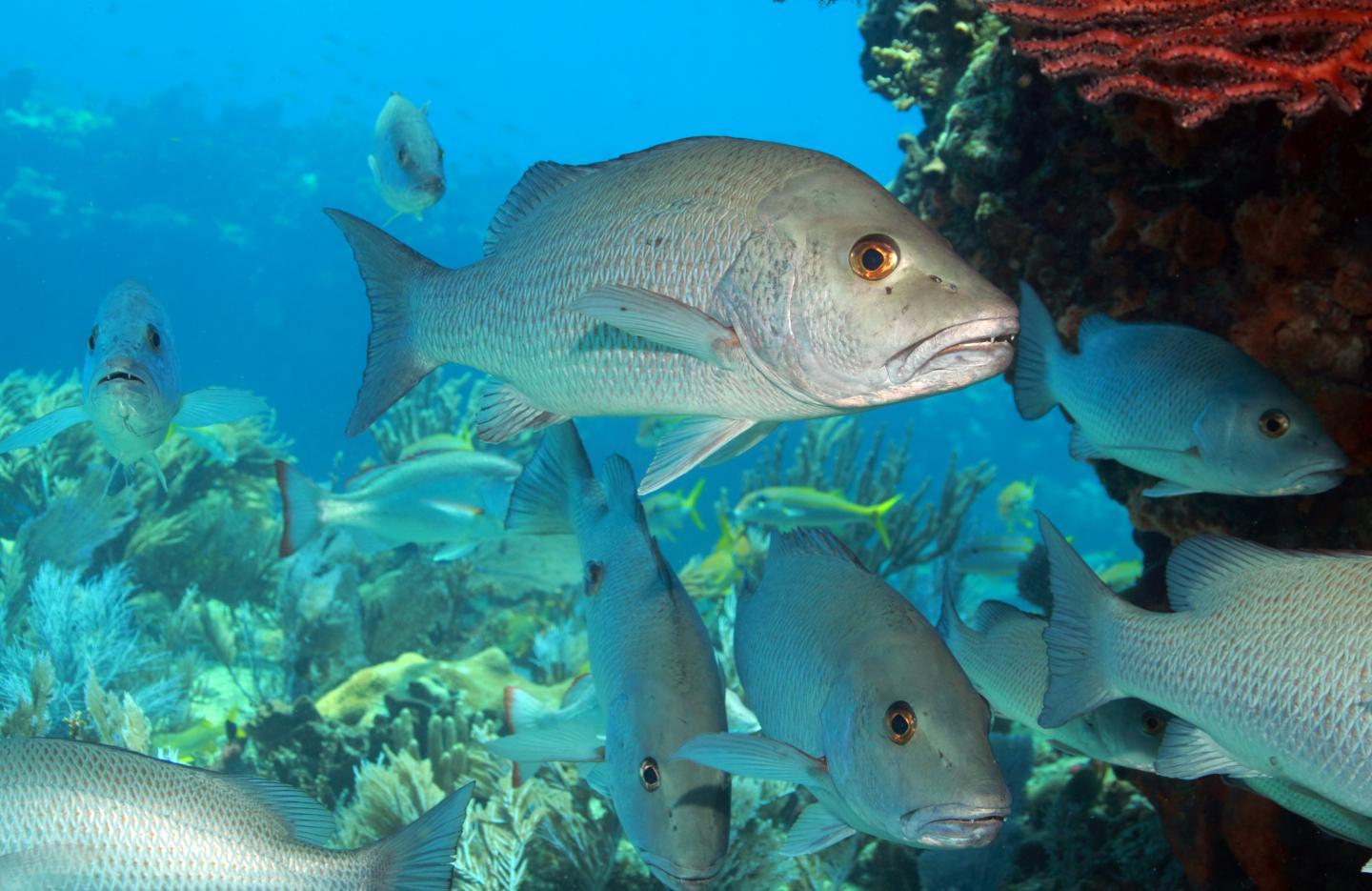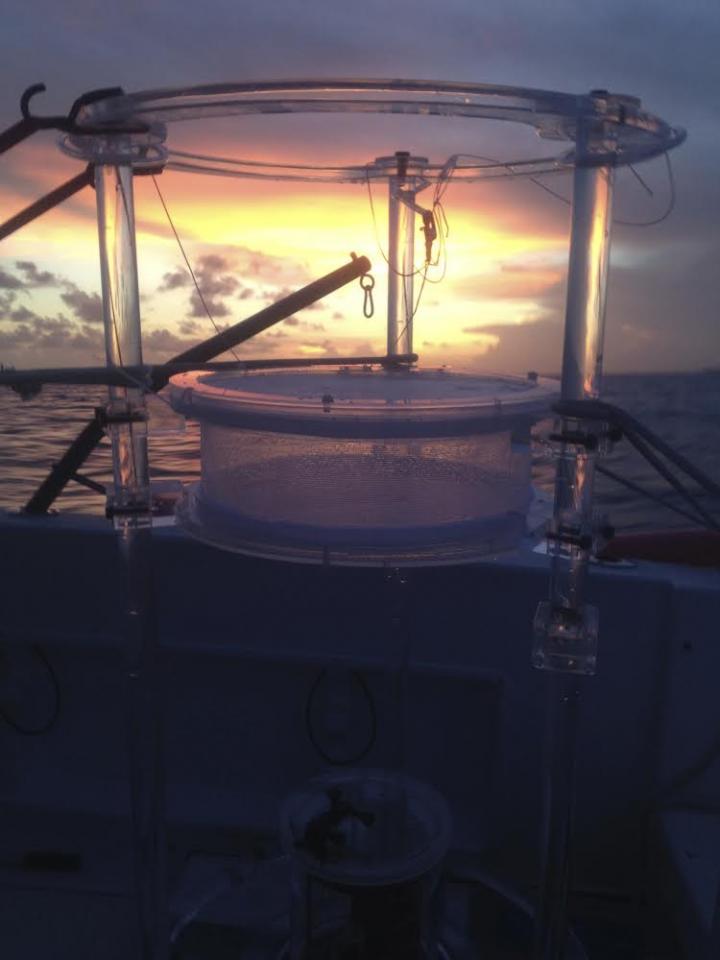Researchers recently used audio and video recording tools to record larval orientation behavior in the pelagic environment.
In their field experiment, the scientists put the recording devices i a drifting in situ chamber called DISC near Fowey Rocks lighthouse in the northern Florida Keys. In total 58 deployments were conducted, 27 during the day and 31 at night. The team also recorded sounds in a laboratory setting to confirm that the sounds observed in the field were from gray snapper larvae. The researchers also referred to the public sound archive at the Macaulay Library to compare the larval sounds to those produced by adult L. griseus.
The researchers observed that larvae produced "knocks" and "growls" in the range of 200–800 Hz, which is within the hearing range of most adult fish. The fish larvae produced these sounds during 70% of the nighttime trials, and none of the daytime trials. The gray snapper larvae used in the study arrived in a large group over the span of a few hours, suggesting that these acoustic signals may provide a mechanism for these larvae to maintain group cohesion during their pelagic journey.

An adult gray snapper (Lutjanus griseus) in Molasses Reef, Florida. Credit: Evan D'Alessandro
"The study was setup to record ambient sounds around the drifting arena that might guide the fish larval orientation. It was a fantastic surprise to listen to the recording and hear that the larva itself was emitting sound," said Paris. "Communication between larvae could allow them to maintain group cohesion, which is critically important for faster swimming, finding navigational signals and settlement cues, and better survival during the pelagic phase."
The paper, titled "First evidence of fish larvae producing sounds," was published in the Oct. 1 issue of the journal Biology Letters. The study co-authors include: Erica Staaterman, Claire Paris, and UM Rosenstiel School graduate student Andrew Kough.
"This discovery has important conservation implications as well," said Erica Staaterman, UM Rosenstiel School Ph.D. student and lead author of the paper. "As anthropogenic noise in the marine environment continues to increase, it is important to understand potential impacts on these previously undiscovered acoustic communication systems."

DISC equipped with audio and video recording systems. Credit: Claire Paris


